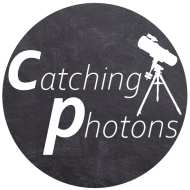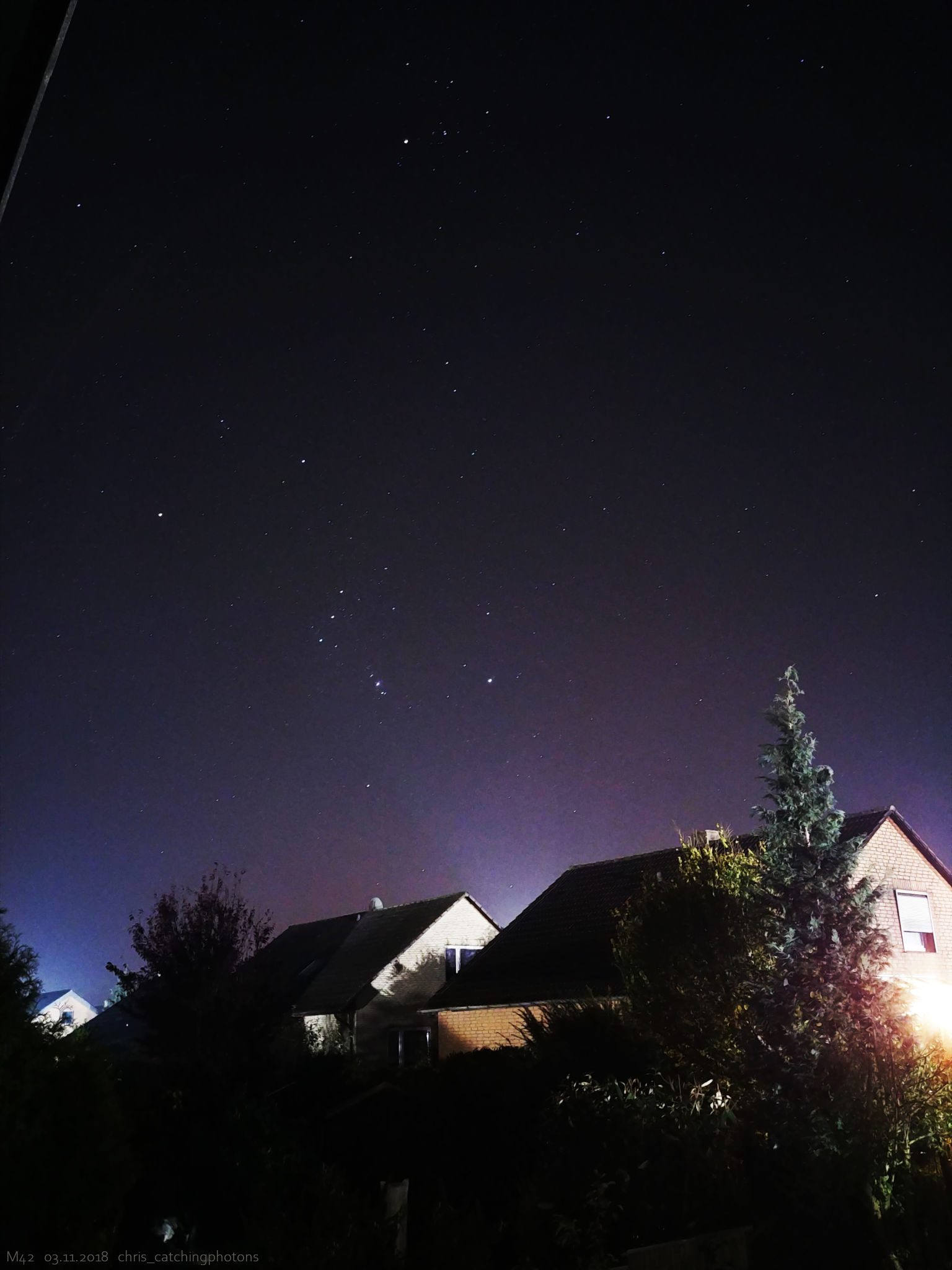03.11.2018
New aspect: Capturing a DSO with a smartphone
Acquisition:
On a clear evening I tried to capture the Orion Nebula M42 with my Smartphone LG G4 f1.8. Therefore I needed to sort out some things: What is the maximum possible exposure length with the unknown focal length of my smartphone? I knew the 1/400-rule by which you need to divide the focal length of your camera by 400 to get the maximum exposure length without getting star trails. But the focal length of the inert lens system was unknown to me, so I needed to try different lengths and play around. Second thing was the right ISO setting. Stars should be visible but the background needed to be settle and dark enough. I ended up with ISO 400 and 20sec exposures.
I took like 10 light frames at freezing temperatures and then 5 dark frames. The dark frames were created by pressing the smartphone into a carped to shut out any light.
Conclusion:
Taking darks with a smartphone is quite a challenge. Even by pressing the lens into a carpet in “total” darkness still some light eventually can sneak inside. Maybe dark tape will do a better job. I accidentally took the images in .jpeg compression mode. Deep Sky Stacker therefore gave me the warning that those frames couldn’t be processed as you need compression free raw-images for the process of stacking. My fault. The image above is a single one minute exposure processed in GIMP2.
Smartphone again?
Definitely! The smartphone is always around and in this single exposure you can clearly see some nebulosity at M42 position (the second star in the belt of Orion). So DSOs seem to be possible and luckily my smartphone can capture images in .raw. So next time!
Greetings,
Chris

